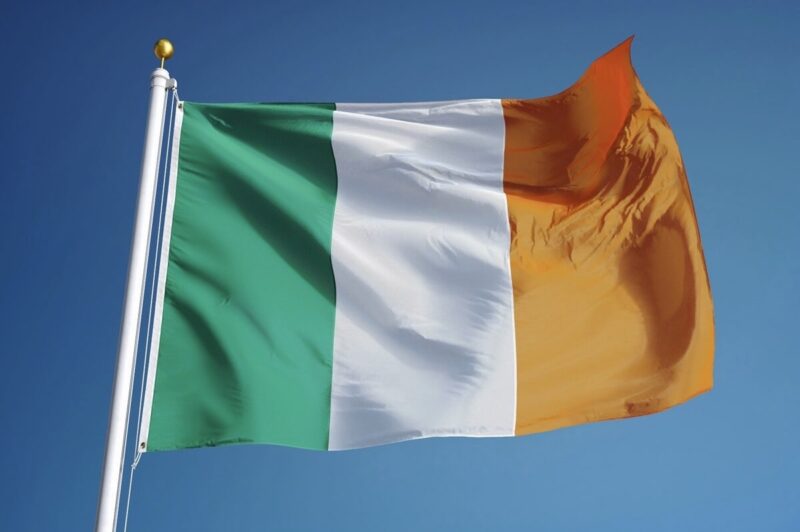
On the second floor of the Smithsonian Institute’s National Museum of American History in Washington, D.C., is a gallery containing several noteworthy items from the American Civil War (1861–1865).
Here you’ll find the original handwritten copy of Abraham Lincoln’s Gettysburg Address and the black silk top hat he wore the day he was assassinated at Ford’s Theatre. However, there is one artifact in the display that most people overlook. It’s an old linen dishtowel — a piece of dirty grey cloth. On the momentous day that General Robert E. Lee surrendered his troops to General Ulysses S. Grant in Appomattox, Virginia, the Confederate Army flew this humble dishtowel as a flag of truce.
White flags have signalled surrender for over two centuries. Scholars believe the earliest incident occurred in China during the Han dynasty (202 BC–220 AD). Although soldiers have used other means of indicating surrender such as placing their shields over their heads, raising their arms straight above their heads or laying down their arms, waving a white flag has become the universal signal. At the Hague Convention in 1899, an international delegation established the first significant laws of war which, in part, drafted the following directive regarding surrender: An individual is considered a parlementaire who is authorized by one of the belligerents to enter into communication with the other and who carries a white flag. The Convention also made it clear that it would not tolerate the misuse of a white flag to falsify surrender or defeat.

White became the colour of choice for several reasons. Armies adopted white handwoven cloth because the material was readily available to all cultures. It also helped that it clearly stood out on the battlefield. Other solid-coloured flags and banners eventually disappeared as warriors created more unique designs. Regalia decorated with colourful patterns, religious symbols and heraldic imagery soon became the norm, aiding in identifying a battalion and enhancing their esprit de corps. As a result, an entirely white flag became unique. During war, it was the one flag that communicated the same message for all.
Other factors support the choice of white as an appropriate symbol for surrender. Western societies associate it with innocence and honesty. It is also closely aligned with peace and freedom—think of white doves. Cleanliness and freshness go hand in hand with the colour—an untainted piece of white paper invites a fresh start and new beginnings.

White is the most popular colour incorporated into national flags — 18% of countries include it in their designs, typically to promote positive attributes. In Japan, it symbolizes the honesty and integrity of their people. A panel of white, representing a lasting truce, sits between Ireland’s green (Catholic) and orange (Protestant). The Federal Republic of Nigeria’s triband has a central white section for peace and unity. Each of these flags debuted in the last 150 years, more than likely capitalizing on white’s established connection with non-violence.

The sports world has also found occasions to use white flags, specifically white towels and cards. In boxing and mixed martial arts, a team will throw a white towel into the ring if they feel their fighter is in danger, indicating to the referee that they wish to withdraw from the competition. “Throw in the towel” has become synonymous with defeat in sports, business or politics.
In 2021, Peace and Sport, headquartered in Monaco, launched the #WhiteCard digital campaign, encouraging sports figures and individuals to post photographs of themselves on social media holding a small white card. The campaign references the yellow and red cards used by referees in the sporting world to signal infractions. By inviting people to brandish white cards, this global organization is encouraging the promotion and spread of peace.
Surrender, truce, freedom, peace and innocence have all aligned themselves with the colour white. That’s quite a line-up. Although that may be a heavy load to carry, white has proven it is up to the task.
Bob Hambly RGD Emeritus
After graduating from the University of the Arts in Philadelphia, Bob spent 10 years working as a freelance illustrator. In 1990, he and his partner Barb Woolley formed the Toronto-based graphic design firm Hambly & Woolley. He graduated from H&W after 30 years of collaborating with exceptional designers, artists, suppliers and a wide range of clients. In 2017, Bob was awarded the International Council of Design's ICoD Achievement Award for his outstanding and consistent achievement in the practice, education or promotion of design. He now devotes his time to writing, photography and numerous other pursuits. He continues to champion art and design through various efforts.
















